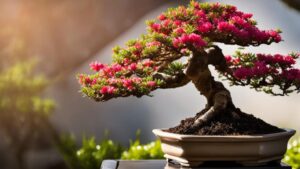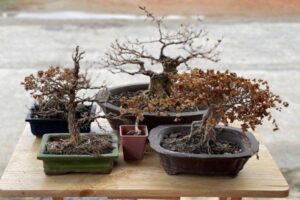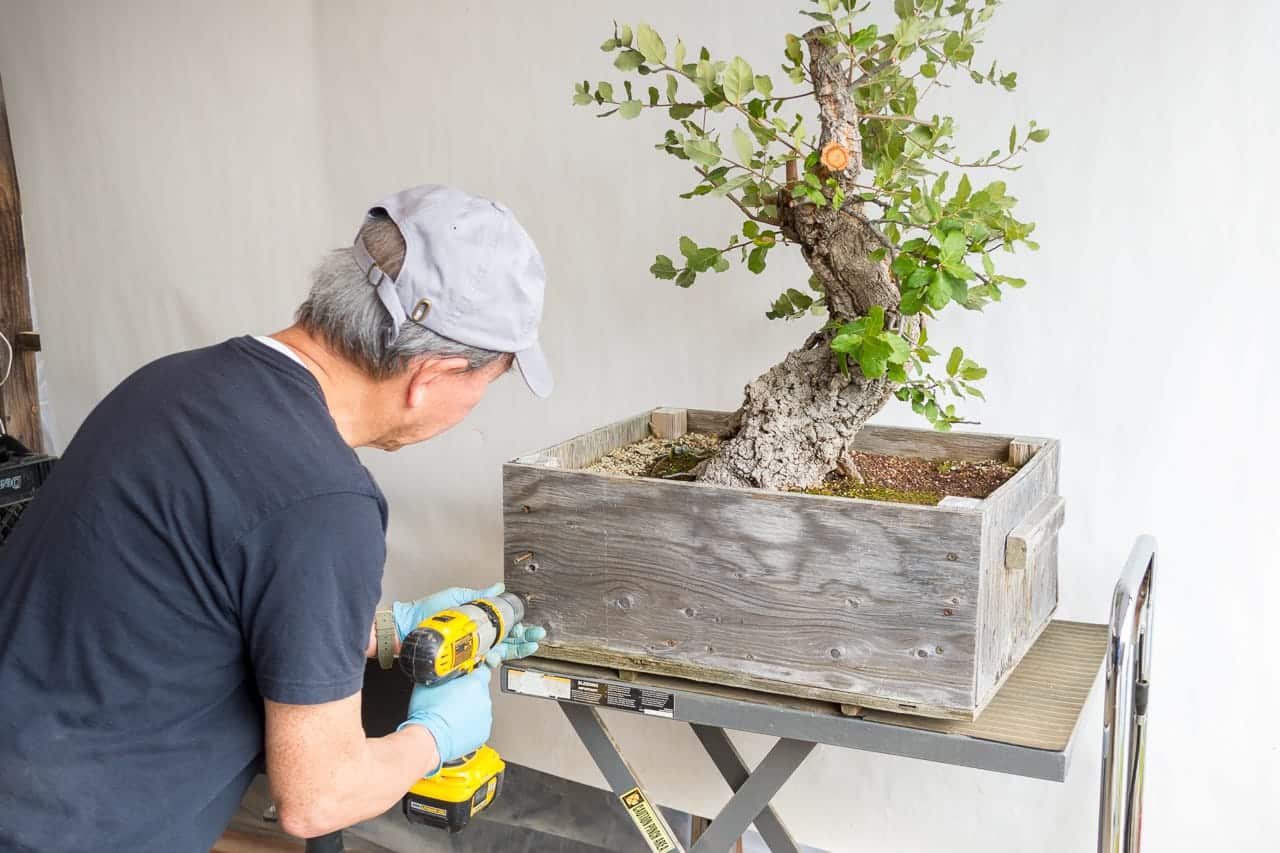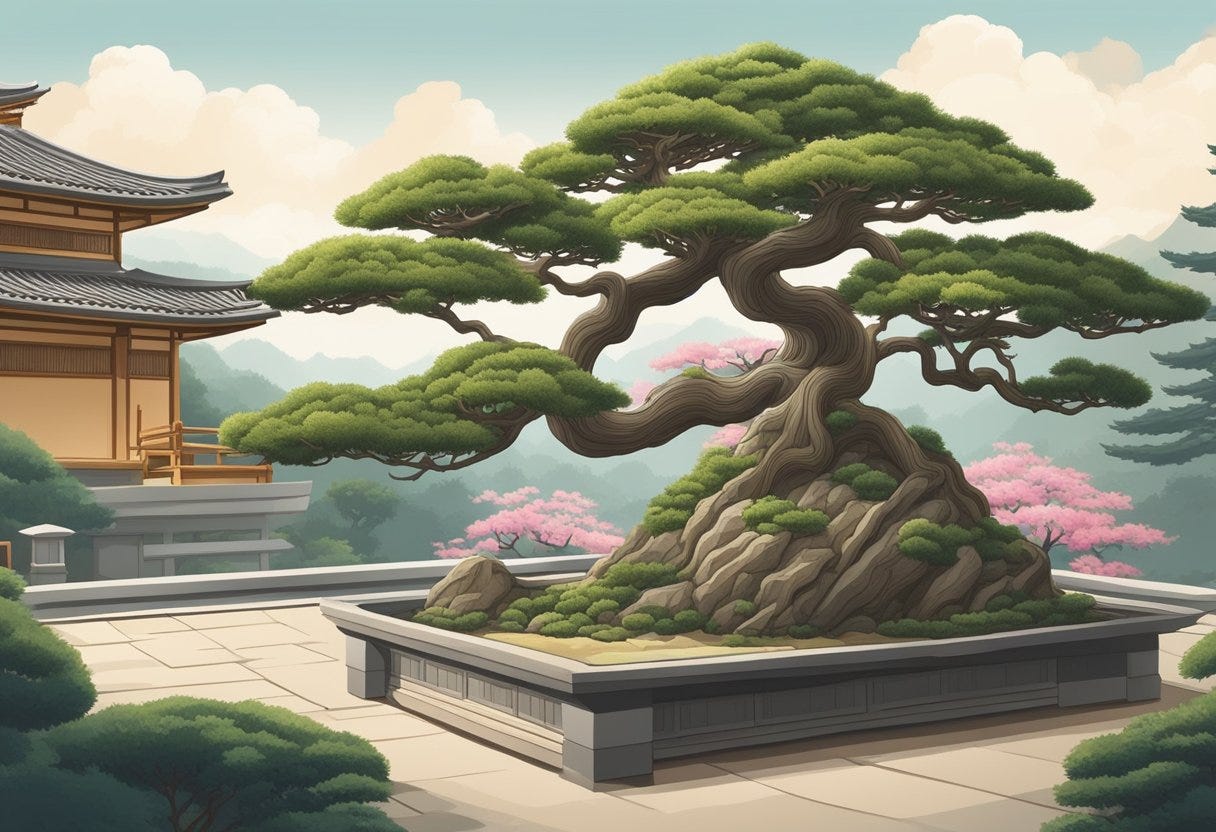Bonsai, with their delicate beauty and ancient tradition, often fall victim to neglect due to their specialized care requirements. However, with proper restoration techniques and diligent care, these neglected bonsai can be brought back to their former glory. One of the first steps in reviving a neglected bonsai is to assess its current condition. This involves carefully examining the tree’s foliage, branches, roots, and overall health. Look for signs of dehydration, disease, pest infestation, or structural issues such as root rot or trunk damage. Once the assessment is complete, you can develop a restoration plan tailored to the specific needs of the bonsai.
Just like bonsai restoration requires careful attention to detail and specialized techniques, selecting the right military clothing brands demands thorough research and consideration of factors like material quality and design.
After assessing the bonsai’s condition, the next step is to address any immediate health concerns. If the tree is dehydrated, it may need to be rehydrated gradually to avoid shocking the roots. This can be done by submerging the bonsai pot in a container of water for a few minutes, allowing the soil to absorb moisture. For bonsai suffering from pest infestations or diseases, appropriate treatments may be necessary. This could include using insecticidal soap for pests or fungicides for fungal infections. It’s essential to research the appropriate treatments for the specific issues affecting your bonsai, as improper use of chemicals can further harm the tree.
Once any immediate health concerns have been addressed, you can focus on long-term restoration efforts. This may involve repotting the bonsai to refresh its soil and root system. When repotting, carefully trim any damaged or overgrown roots and prune the tree’s branches to promote healthy growth. Use a well-draining bonsai soil mix to ensure adequate drainage and aeration for the roots. Additionally, consider applying a slow-release fertilizer to provide essential nutrients to the bonsai as it regains its strength. Regular watering, pruning, and maintenance will be crucial in nurturing the bonsai back to health over time.
Maintaining the health and beauty of bonsai trees involves regular care and the use of suitable tools and products, including those containing delta-8. Incorporating delta-8 into bonsai care routines can enhance the overall growth and resilience of these miniature masterpieces, providing them with the necessary nutrients and support for optimal development.
Pruning and Training Techniques

Pruning and training are essential aspects of bonsai care, particularly for neglected trees that may have become overgrown or misshapen. Pruning helps maintain the bonsai’s desired shape and encourages compact growth, while training involves guiding the tree’s branches and foliage to achieve a balanced and harmonious design. When pruning neglected bonsai, start by removing any dead, diseased, or crossing branches to improve air circulation and reduce the risk of further damage. Use sharp bonsai shears to make clean cuts at a slight angle, leaving a small stub to promote healing.
In addition to pruning, training techniques such as wiring can help reshape the bonsai’s branches and create the desired aesthetic. Before wiring, carefully bend the branches into the desired position to avoid causing stress or damage. Use aluminum or copper bonsai wire of appropriate thickness to support the branches without cutting into the bark. When wiring, wrap the wire around the branch in a spiral motion, ensuring it is snug but not too tight. Avoid leaving wire on the bonsai for extended periods, as it can constrict growth and leave permanent marks on the branches.
Did you know that leveraging the expertise of a video marketing agency can breathe new life into your bonsai restoration efforts? By capturing the intricacies of the restoration process through compelling visuals, you can engage and educate a wider audience about the art of bonsai care.
As you prune and train your neglected bonsai, keep in mind the principles of bonsai aesthetics, such as balance, proportion, and asymmetry. Aim to create a naturalistic appearance that reflects the tree’s age and character. Regularly evaluate your progress and make adjustments as needed to refine the bonsai’s design. With patience and careful attention to detail, you can transform a neglected bonsai into a beautiful and harmonious work of art.
Patience and Persistence
Restoring neglected bonsai requires patience and persistence, as it may take months or even years to see significant improvements. It’s essential to remain committed to the restoration process and provide consistent care and attention to your bonsai. Keep track of your bonsai’s progress over time, noting any changes in health, growth, or appearance. Celebrate small victories along the way, such as new growth or improved vigor, as they indicate that your efforts are paying off.
Similar to how meticulous restoration techniques breathe new life into neglected bonsai, effective loan servicing for private lenders ensures that financial investments are managed with care and precision.
In addition to regular maintenance, continue to research and educate yourself on bonsai care techniques and principles. Attend workshops, join bonsai clubs, and seek advice from experienced enthusiasts to deepen your understanding of this ancient art form. Share your experiences and insights with others in the bonsai community, as they can offer valuable support and encouragement. By cultivating a sense of community and camaraderie, you’ll find inspiration and motivation to continue improving your bonsai skills.
Above all, remember that bonsai is a living art form that requires respect, patience, and understanding. Treat your bonsai with care and consideration, and it will reward you with beauty and tranquility for years to come. Embrace the journey of bonsai cultivation, and enjoy the process of nurturing and transforming neglected trees into thriving works of living art. With dedication and perseverance, you can breathe new life into neglected bonsai and experience the joy of watching them flourish once again.
Like the delicate restoration process of bonsai, wedding officiants carefully tend to the needs of couples, crafting ceremonies that reflect their love and commitment, enriching their lives in profound ways.
Fine-Tuning Watering Techniques
Watering is a fundamental aspect of bonsai care, yet it is often misunderstood or overlooked, leading to issues such as root rot or dehydration. Neglected bonsai may have irregular watering schedules or improper drainage, further exacerbating their health problems. To address this, fine-tuning your watering techniques is essential for restoring neglected bonsai to optimal health. Start by understanding the specific water needs of your bonsai species, as different varieties have varying requirements based on factors such as climate, soil type, and pot size.
When watering neglected bonsai, aim for consistency and moderation to avoid overwatering or underwatering. Check the moisture level of the soil regularly by inserting a finger into the soil up to the second knuckle. If the soil feels dry, it’s time to water the bonsai thoroughly. Use a gentle watering can or hose attachment to moisten the soil evenly, ensuring that water reaches the roots without causing soil erosion or compaction. Avoid watering the foliage directly, as this can lead to fungal diseases or sunburn.
Much like how restoring neglected bonsai requires care and attention, participating in kambo ceremonies in Austin, TX, requires individuals to approach the experience with openness and readiness for personal transformation.

In addition to regular watering, consider implementing techniques such as bottom watering or misting to supplement your bonsai’s hydration needs. Bottom watering involves placing the bonsai’s pot in a shallow container of water and allowing the soil to absorb moisture through the drainage holes. This method ensures thorough hydration while minimizing the risk of overwatering. Misting, on the other hand, involves spraying the bonsai’s foliage with a fine mist of water to increase humidity and prevent dehydration. Both techniques can be beneficial for neglected bonsai that require extra moisture.
Understanding Light Requirements
Light is another crucial factor in bonsai health, as it provides the energy needed for photosynthesis and growth. Neglected bonsai may have been placed in suboptimal lighting conditions, leading to issues such as weak growth, leggy branches, or leaf drop. To revive neglected bonsai, it’s essential to understand their specific light requirements and provide appropriate exposure to sunlight or artificial light sources.
In the meticulous art of bonsai restoration, attention to detail is paramount, much like the precision required for dog grooming in Seattle, where every trim and brush enhances the pet’s appearance and well-being.
Start by evaluating the current lighting conditions where your bonsai is located. Determine the direction of sunlight throughout the day and identify any obstructions such as buildings or trees that may block or filter light. Ideally, bonsai should receive indirect sunlight for at least six hours a day, although some species may tolerate more or less depending on their preferences. If your bonsai has been kept indoors, consider placing it near a south-facing window or using supplemental grow lights to provide adequate light intensity.
In addition to light intensity, consider the quality of light your bonsai receives, particularly if it has been exposed to artificial lighting sources such as fluorescent or LED bulbs. While these lights can supplement natural sunlight, they may not provide the full spectrum of wavelengths needed for healthy growth. Experiment with different light sources and positioning to find the optimal balance for your bonsai’s needs. Monitor the response of your bonsai to changes in lighting conditions, adjusting as necessary to promote vigorous growth and vibrant foliage.
Electrical stimulation in Chicago harnesses the power of technology to facilitate muscle rehabilitation and enhance physical performance. Similarly, leveraging innovative methods and tools can breathe new life into bonsai trees, ensuring they flourish with renewed vigor and beauty.
Seasonal Care Considerations
Bonsai care requirements can vary significantly depending on the season, with factors such as temperature, humidity, and daylight hours affecting growth and dormancy cycles. Neglected bonsai may have been subjected to inconsistent seasonal care, leading to stress or stunted growth. To revive neglected bonsai, it’s essential to understand their seasonal care needs and adjust your maintenance routine accordingly.
During the growing season, typically spring through early fall, bonsai require ample sunlight, regular watering, and frequent fertilization to support vigorous growth. Monitor soil moisture levels closely during hot weather, as bonsai may dry out more quickly in warm temperatures. Prune and wire bonsai as needed to maintain their shape and encourage new growth, taking care to avoid stressing the tree during periods of active growth.
When working with neglected bonsai, having access to a large dumpster in Pensacola can streamline the cleanup process, allowing you to focus on the intricate restoration techniques. Proper disposal of waste materials ensures a clutter-free workspace, promoting better airflow and light exposure for your bonsai.
As temperatures cool and daylight hours shorten in the fall, bonsai enter a period of dormancy where growth slows, and metabolic activity decreases. Reduce watering frequency and stop fertilizing bonsai to allow them to transition smoothly into dormancy. Protect bonsai from frost and freezing temperatures by moving them to a sheltered location or insulating them with mulch or fleece wraps. Monitor your bonsai for signs of stress or disease during the winter months, taking care not to overwater or expose them to sudden temperature fluctuations.

In the spring, as temperatures warm and daylight hours lengthen, gradually reintroduce watering and fertilizing to stimulate new growth and prepare bonsai for the growing season ahead. Monitor your bonsai closely for signs of budding or new growth, indicating that they are emerging from dormancy. Resume regular maintenance tasks such as pruning, wiring, and repotting as needed to keep your bonsai healthy and vibrant throughout the growing season. By understanding and addressing the seasonal care needs of neglected bonsai, you can ensure their long-term health and vitality. Implementing regular measures provided by commercial pest control in Reno can prevent infestations that could harm your bonsai trees and disrupt their growth.
Continued Learning and Growth
Bonsai cultivation is a lifelong journey of learning and growth, with endless opportunities for experimentation, creativity, and discovery. As you work to revive neglected bonsai and nurture them back to health, continue to expand your knowledge and skills through ongoing education and practice. Explore different bonsai styles, techniques, and species to broaden your understanding of this ancient art form and develop your unique aesthetic sensibility.
Engage with the bonsai community both locally and online to exchange ideas, share experiences, and seek guidance from fellow enthusiasts and experts. Attend bonsai exhibitions, workshops, and seminars to gain inspiration and insight from accomplished practitioners and master artisans. Take advantage of resources such as books, articles, and instructional videos to deepen your understanding of bonsai principles and techniques.
Just as each bonsai requires a unique approach to revitalization, designer dresses cater to individual preferences, offering a wide range of styles, colors, and fabrics to choose from.
Incorporate elements of mindfulness and reflection into your bonsai practice, cultivating a deeper connection with nature and the passage of time. Embrace the impermanence and transience inherent in bonsai cultivation, recognizing that each tree is a living expression of beauty and resilience. Find joy and fulfillment in the process of nurturing neglected bonsai back to health, celebrating their growth and transformation over time.
As you embark on this journey of restoration and renewal, remember that patience, persistence, and passion are the keys to success. Stay committed to your bonsai and to yourself, trusting in the natural resilience of these remarkable trees to overcome adversity and thrive in the face of challenges. By dedicating yourself wholeheartedly to the care and cultivation of neglected bonsai, you can create living works of art that inspire awe, wonder, and reverence for the natural world.
If you’re looking to bring new life to neglected bonsai, consider seeking inspiration from the creativity and attention to detail found in wedding photography in Arkansas. Akin to photographers skillfully composing each shot to tell a unique love story, bonsai enthusiasts can carefully prune and reshape their trees to create captivating natural sculptures.



